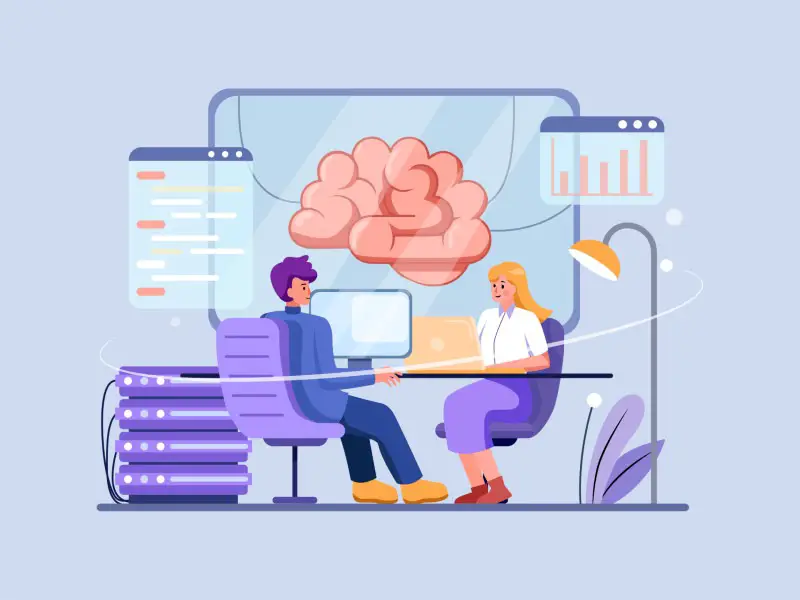Introduction:
Artificial intelligence (AI) is rapidly changing the world, and research and development (R&D) is no exception. AI is being used to automate tasks, discover new insights, and develop new products and services. As a result, AI is having a major impact on the way that R&D is conducted.
In this blog post, we will explore the ways in which AI is changing R&D. We will discuss current research trends in AI, the role of AI in scientific research, and the future of AI research. We will also provide examples of how AI is being used in R&D today.
Current Research Trends in Artificial Intelligence:
There are a number of current research trends in AI that are having a major impact on R&D. These trends include:
- Deep learning: Deep learning is a type of machine learning that uses artificial neural networks to learn from data. Deep learning has been used to achieve breakthroughs in a variety of fields, including image recognition, natural language processing, and drug discovery.
- Natural language processing: Natural language processing (NLP) is a field of computer science that deals with the interaction between computers and human language. NLP is being used to develop new tools for machine translation, text summarization, and question answering.
- Computer vision: Computer vision is a field of computer science that deals with the automatic analysis of digital images and videos. Computer vision is being used to develop new tools for self-driving cars, facial recognition, and medical imaging.
The Role of AI in Scientific Research:
AI is playing an increasingly important role in scientific research. AI is being used to automate tasks, discover new insights, and develop new models and theories. For example, AI is being used to:
- Automate data collection and analysis: AI can be used to automate tasks such as data cleaning, feature extraction, and statistical analysis. This frees up scientists to focus on more creative and strategic work.
- Discover new insights: AI can be used to discover new patterns and relationships in data that would be difficult or impossible for humans to find. This can lead to new discoveries and breakthroughs.
- Develop new models and theories: AI can be used to develop new models and theories that can be used to explain and predict phenomena. This can lead to new insights and understanding.
Pioneers in Artificial Intelligence: Defining the Field
The field of artificial intelligence (AI) is constantly evolving, and there are many pioneers who have helped to shape its development. Some of the most notable AI pioneers include:
- Alan Turing: Turing is considered to be the father of theoretical computer science and artificial intelligence. He is best known for his work on the Turing machine, a theoretical model of computation that is still used today.
- John McCarthy: McCarthy is credited with coining the term “artificial intelligence” in 1955. He is also known for his work on the Lisp programming language, which is still used in AI research today.
- Margaret Hamilton: Hamilton was the lead software engineer for the Apollo 11 mission. Her work on the Apollo Guidance Computer helped to make the moon landing possible.
- Douglas Engelbart: Engelbart is known for his work on the graphical user interface (GUI), which is now used on most computers. He also invented the mouse, which is still used today.
- Geoffrey Hinton: Hinton is a British-Canadian computer scientist who is known for his work on deep learning. He is a co-founder of the Google Brain project, which is one of the leading AI research projects in the world.
These are just a few of the many pioneers who have helped to shape the field of artificial intelligence. Their work has laid the foundation for the advances that we are seeing today in AI.
Innovative AI Research Projects to Watch
There are many innovative AI research projects underway today. Some of the most promising projects include:
- DeepMind’s AlphaFold: AlphaFold is a protein folding program that has been shown to be more accurate than any other method. This could have a major impact on the fields of medicine and biology.
- OpenAI’s Five: Five is a Dota 2 bot that has defeated some of the best human players in the world. This shows that AI is capable of mastering complex games.
- Google Brain’s Imagen: Imagen is a text-to-image generation model that can create realistic images from text descriptions. This could be used for a variety of applications, such as creating movie posters or designing new products.
- DeepMind’s Gato: Gato is a multi-modal AI agent that can learn to perform a wide variety of tasks. This could lead to the development of AI systems that can interact with the world in a more natural way.
These are just a few of the many innovative AI research projects underway today. These projects have the potential to revolutionize many industries and improve our lives in a variety of ways.
How might AI-based tools impact the future job market for tax preparation professionals?
The Future of AI Research:
The future of AI research is bright. AI is still in its early stages of development, but it has the potential to revolutionize many fields, including R&D. As AI continues to develop, it will become even more powerful and versatile. This will lead to new and innovative ways of conducting R&D, which will ultimately lead to new products, services, and technologies that will improve our lives.
Lorem ipsum dolor sit amet, consectetur adipiscing elit. Ut elit tellus, luctus nec ullamcorper mattis, pulvinar dapibus leo.
Artificial Intelligence and Deep Learning with Python
Are you wearied by deep learning resources that don’t clarify every single line of code? “Artificial Intelligence and Deep Learning with Python” revolutionizes the way deep learning, AI, and Python are introduced to beginners. The author draws an insightful analogy, equating a computer language with any other language, asserting that understanding every component of a sentence or a line of code is vital to generate novel ones. Unlike other resources claiming to be for “beginners”, this book stands out by dissecting and explaining every line of code.
There’s nothing more perplexing than encountering an unexplained line of code after an initially well-explained one. This book ensures a seamless learning journey with comprehensive explanations for each line of code in every project discussed, along with detailed insights into deep learning and AI concepts. Whether you’re a Python novice or a seasoned programmer, this book will guide you through the intriguing applications of Python in diverse AI and deep learning projects.
You’ll dive into captivating projects and topics, including:
- Deep learning applications in audio/music and voice recognition
- Neural network implementations with image files
- Creating an algorithm for predicting stock prices
- Applying AI through Thompson sampling
- Using deep learning for crime statistic predictions
- Binary classification with neural networks
- Building a Convolutional Neural Network (CNN) for your image files
- Teaching your computer to “read” and “comprehend” the English language
- SQL integration with neural networks
About the author: Steven D’Ascoli, an adjunct professor at St. John’s University, is renowned for his multi-disciplinary expertise.

AI: A Green Revolution in the Agricultural Landscape
Artificial Intelligence is fueling a new Green Revolution, transforming agriculture with precision farming, sustainable practices, and smarter pest control. Discover how AI is shaping the future of farming, creating a sustainable, efficient, and productive agricultural landscape


